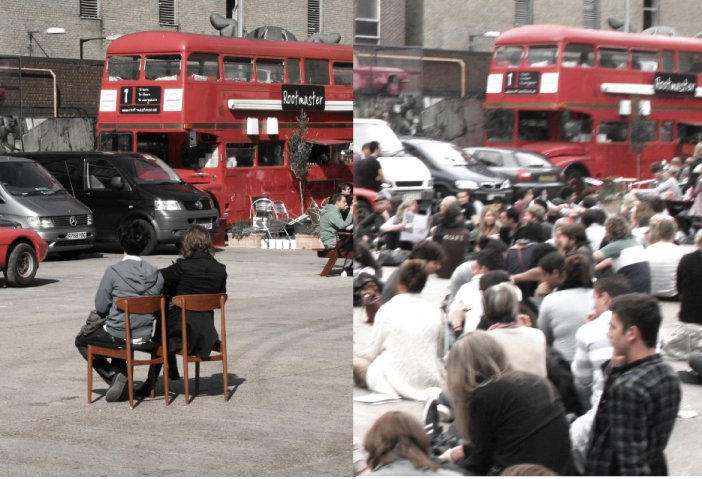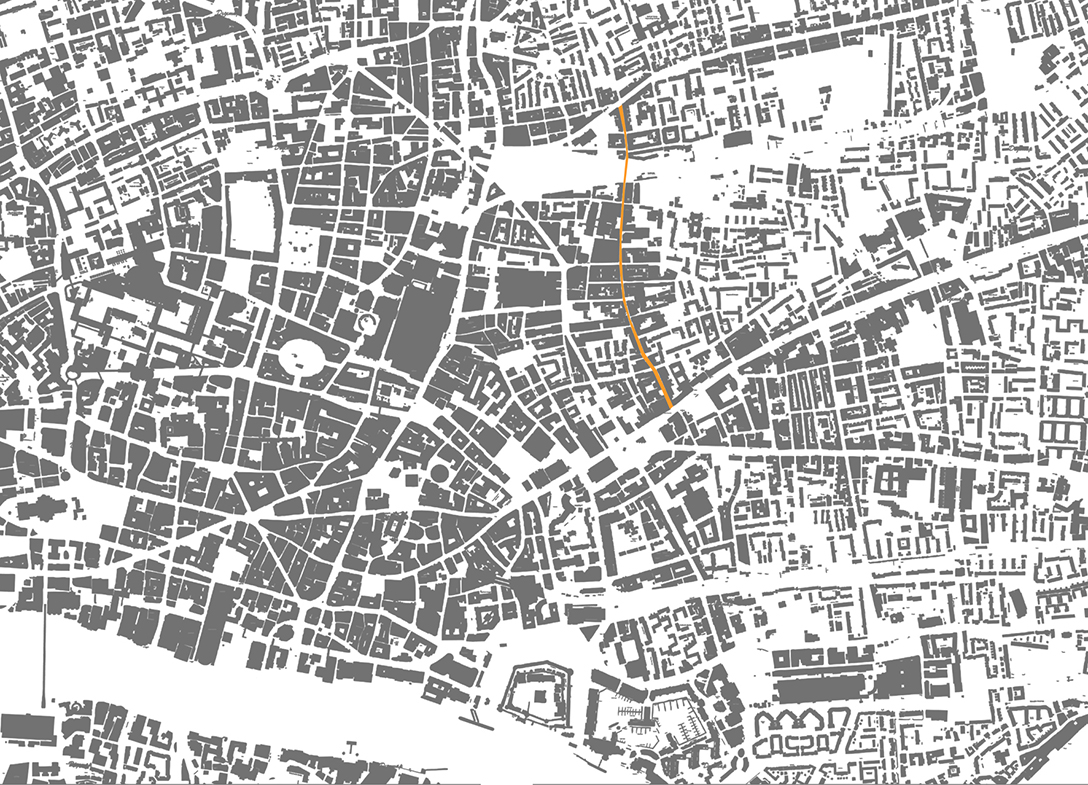Delvendahl Martin Architects
Bricklane – Cinematic Space
2010
…in The Man with the Movie Camera, it is the city itself which is minutely disassembled, reconstructed and revivified, and finally projected back to itself.
Stephen Barber, Cinema and Urban Space
A performance implies the relationship between two basic elements: a performer and an audience. In the case of film and video this relationship is established between a viewer and the display of a moving image. Throughout the evolution and exploration of different media, some forms of performance have examined more complex methods of interaction between the two subjects. Like Dan Graham’s video and performance installations, the static boundaries are traversed to create reciprocal forms of interaction, where the mutual feedback generated actively informs and influences the outcome of the performance.
The space where performance takes place can also determine the nature of this relationship so rather than just accepting the cinema as a passive space for the showcase of film, we set up to explore the potential these spaces have as devices of visual interpretation.
Similar to a camera, a building can be understood as an apparatus for viewing. In this way architecture defines certain psychological and cultural boundaries to establish notions of public and private spaces within itself and with the context where it’s located. Following the analogy with the camera, the windows, thresholds, facades and skylights more than being just mediators of the environment, are also the viewfinders and lenses through which other spaces and the immediate context are perceived. Moreover the presence of film can be used actively in the space to readjust these boundaries and create new forms of perception.
During the course of the year the students investigated the potential of these forms of perception through the analysis of art installations, films and buildings to be taken as reference points for site-specific projects.
The shifting presence of Brick Lane
The area of Brick Lane with its rich cultural background was the context where the projects were developed. The area is intrinsically dynamic both at historical and physical levels and it was important to gain an understanding of these two conditions. This meant that it is as relevant to learn about the different waves of immigrants in the last two hundred years and how this has shaped the character of the area, as it was to observe and analyze more immediate phenomena such as the changing patterns of occupation of the public space throughout the week.

